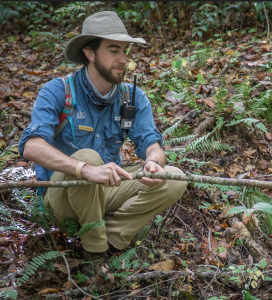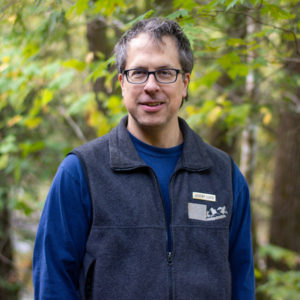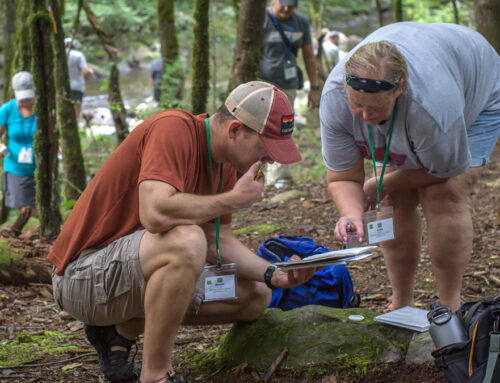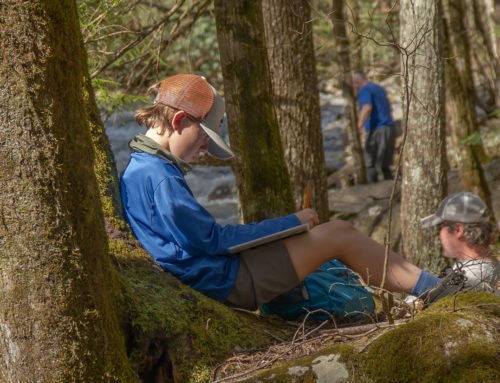What are your favorite ways to connect with nature while following safer at home guidelines? Tremont Institute faculty and staff share how they are connecting with nature from their homes this spring.

Luke Schutzman, Teacher Naturalist
Luke Schutzman, Teacher Naturalist
Drawing and painting wildlife is how I stay connected to nature while staying home during this pandemic. When I cannot visit zoos or parks, I rely on photos, books, and toys to work from and improve my drawing skills. Then I share my art with my friends and family via text, email, and social media to help them connect to nature.
Bridget Loland, Office Manager
One of the ways I love to connect with nature is to open the windows in my home and allow the cool breeze to flow through my house as I listen to the birds sing their majestic songs!

Emily Stein, Youth Programs Coordinator
Emily Stein, Youth Programs Coordinator
I stay connected to nature while staying home by spending time on my porch. Whether I’m reading, listening to a podcast, or calling a friend, just being outside gives me a front row seat to my natural neighbors. Seeing a bird flapping around in the bird bath or a little jumping spider stalking a fly reminds me that there is so much more happening than I am aware of!

Kimberly Weber, Marketing Manager
Kimberly Weber, Marketing Manager
While following safer at home guidelines, I have felt more connected to nature as I get to know the birds that call my neighborhood home. I have several friends and family members who are into birdwatching, and I never really understood the appeal, but now that I’m taking the time to really listen to what is happening outside my window, I find myself wanting to learn more about all things birds. Their different songs are beautiful, and when you catch a glimpse of these vocal creatures, they’re quite amazing to watch as well!

Catey Terry, President and CEO
Catey Terry, President and CEO
My favorite way of getting myself and my kids connected has been searching for four-leaf clovers in our yard. It has been a great lesson in patience while it gets us outside using our observation skills. (And for younger kids, it can be a great way to spot patterns.) We found a patch of super tall clovers and my kids began sticking their faces in the clover pretending they were snorkeling. So far we’ve found over 70 four-leaf clovers!

Erin Canter, Manager of Science Literacy and Research
Erin Canter, Manager of Science Literacy and Research
Lately my favorite way to feel connected to spring and nature’s seasonal changes is to work in my yard. I just moved into a home with a beautiful view and lots of native wildlife, but also with many invasive plant species. Removing the English ivy has been really rewarding, as I can see the little native flowers and grasses popping up and enjoying their newfound access to sunlight!

Jeremy Lloyd, Manager of Field Programs and Collegiate Studies
Jeremy Lloyd, Manager of Field Programs and Collegiate Studies
My six-year-old son and I have spent as much time outdoors as possible. We collect fresh leaves of plants in the yard and figure out which ones are edible or medicinal. Dandelion leaves turn bitter but are high in vitamins. Violet flowers are edible. So are the pinkish flowers falling from redbud trees.

David Reedy, Community Development Specialist
David Reedy, Community Development Specialist
I love sharing what I find in nature right around my house via Zoom. I have a lot of friends and family who live in more urban environments and so they always enjoy when I show flowers, new leaf growth, or the slug that made its way onto my porch the other day. Mutual excitement about the natural world helps me build my connection and I am thankful I get to do that with people near and far via video chat.

Joey Terlizzi, Teacher Naturalist
Joey Terlizzi, Teacher Naturalist
I’ve found one of the best ways to connect with nature indoors is to find a quiet room in the house, sit down, relax, close my eyes, and take 10 deep breaths. When I breathe in, I think of all the plants, from phytoplankton to redwoods, that could have provided the oxygen that I have just inhaled. Then, when I breathe out, I offer the carbon dioxide I exhale as a gift of gratitude to those plants.


![A Deep Dive Into Wetlands [Free Lesson Plan]](https://gsmit.org/wp-content/uploads/2024/02/madeline-blog-cover-500x383.png)
![Are You a Math and Science Person or a History and English Person? [Free Lesson Plan]](https://gsmit.org/wp-content/uploads/2024/01/Girls-in-Science-Erin-Rosolina-3-1-500x383.jpg)


